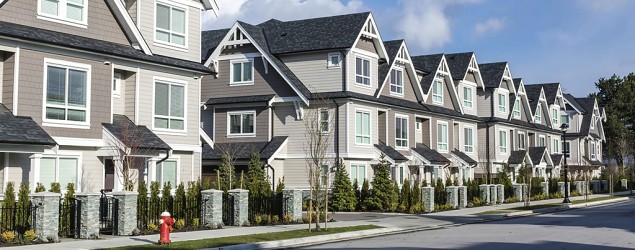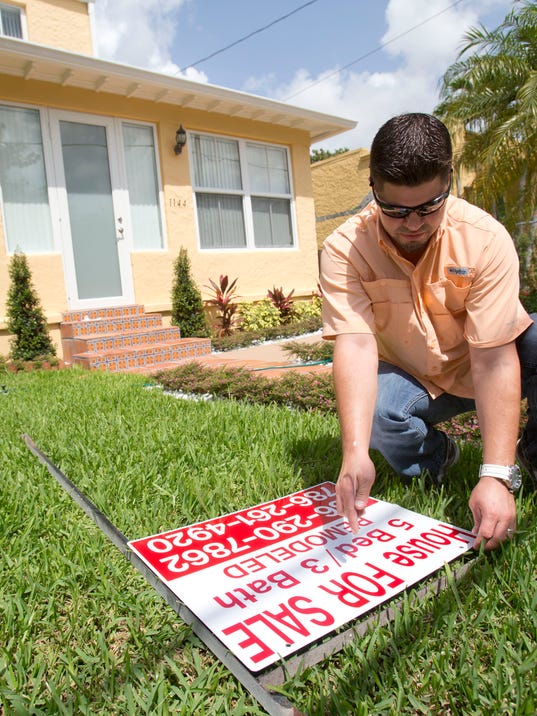
Dan Collins has never regretted his decision to purchase a condo instead of a house in Baltimore, because it absolved him of having to shovel snow or mow a lawn.
Since he purchased a two-bedroom condo situated on the top floor, the senior director of media relations for Mercy Medical Center has reveled in a panoramic view of the neighborhood. Living in a house wasn’t appealing to him since he was single at the time and didn’t even own plants or a pet.
“I liked the ‘feel’ of ownership and to know that this place was actually mine, so I decorated accordingly,” he said. “A friend once said that my condo was like a ‘museum of your own life and you’re the curator.’ I felt more free to do that in the condo versus an apartment when you realize you don’t own anything.”
Lack of Maintenance Is a Plus
Many first-time homeowners are drawn to the ease of owning a condo or a townhouse instead of a house because they are not responsible for the upkeep and maintenance of the common areas of the property. The monthly fees paid by the homeowner cover costs of mowing the lawn and other necessities such as repairs to the roof.
In the Bay Area, buyers are often drawn to the condos since many of them are newly built with contemporary designs and modern amenities with smart home appliances such as thermostats or keyless door locks, said Tom MacLeod, CEO of PocketList, a San Francisco-based real estate company which connects buyers and sellers through a private marketplace. Since housing is more expensive in states such as California, “turnkey properties are even more attractive,” he said.
If you are purchasing your first home, saving up money for a downpayment might be more attainable. Since condos or townhomes tend to be more affordable than a house, it’s a good option for people who do not want a large chunk of their salary going toward a mortgage since more “singles are living alone and they don’t need the square footage that comes with having a single-family home,” MacLeod said.
The amenities offered by condos can be very appealing such as having access to a gym, pool, pet services or security right on the property. Being able to eliminate a gym membership and having one less bill is tempting.
“Many buyers calculate the savings they will experience due to the shared amenities available in townhouses or condos versus single family homes,” MacLeod said. “These shared amenities also create a community aspect that appeals to buyers of all demographics."
 |
| BECOME A CALIFORNIA REAL ESTATE AGENT...CLICK LOGO TO VIEW OUR LIVE LECTURE SCHOOL |
Owning a condo means the ability to rent out your place on a short-term basis with a service such as Airbnb or long-term can be an easy way to build up savings or pay down debt.
“Many buyers enjoy the flexibility to use real estate as an investment they can use or monetize,” MacLeod said.
If you choose to live in a city, your decision on what type of home to buy can be hampered by what kind of housing is available. In large metropolitan areas such as Chicago, the number of single-family homes is much smaller than condos, said Christine Lutz, director of residential brokerage for Chicago-based Kinzie Real Estate Group.
In the case of Arvada, Colo. resident, her decision with her husband to purchase a townhouse last year was relatively simple, as neither likes yard work. After living in Washington, D.C. for eight years before they relocated, the couple had developed an appreciation for the popular row house style.
Although the couple also looked at some single family properties, Simpson, a senior strategist in public relations and social media in Denver, said they had another consideration to encounter. Lutz and her husband were “completely put off by both the size of any yard they saw and also how much more yards add to a home's ‘value.’"
In Denver, the preference to have even a mid-sized yard amounted to adding roughly another $100,000 on the cost of the house. The couple knew they didn’t want to shell out extra money for “something they would hate having to maintain,” she said.
They wound up opting for a three bedroom townhouse which also cost “well below” what they could qualify for in a mortgage, plus a very small space in the back that was covered in rocks for a grill and a couple of chairs.
“Given that our neighbors on the other side of the wall aren't prone to screaming matches, we couldn't be happier with the choice,” Simpson said.
Owning a condo or a townhome might not be a good option if you don’t want to spend hundreds of dollars or more each month for a condo fee, but even people who own standalone houses often have to pay a homeowners' association fee for similar expenses such as a neighborhood pool and landscaping.
“This can greatly affect someone living on a fixed income,” said Alice Conrad, a broker in Carmel, Calif.
Downsides Can Occur During Sale
While selling a townhouse is similar to a detached single family home, the sale of a condo can be more complex because of the rules imposed by the association and lenders.
During the sale of a condo, you must provide the potential buyer with a series of documents, including financial ones and rules and regulations. The buyer will want to review them to make sure he meets the criteria. The process can be longer because it can take ten days to obtain the documents to them and it might take them another five days to review it, said George Beasley, a residential broker in Seattle.
“This can be stressful for condo sellers,” he said.
Another potential glitch in the process is that the lender may not approve a mortgage for a condo if there are many rentals in the building, insufficient reserves, ongoing litigation the association may have with the developer or a large percentage of late homeowners’ dues, Beasley said.
“There is so much to consider when selling a condo, and you better have your ducks in a row if you’re going to be successful,” he added.





.jpg)






















